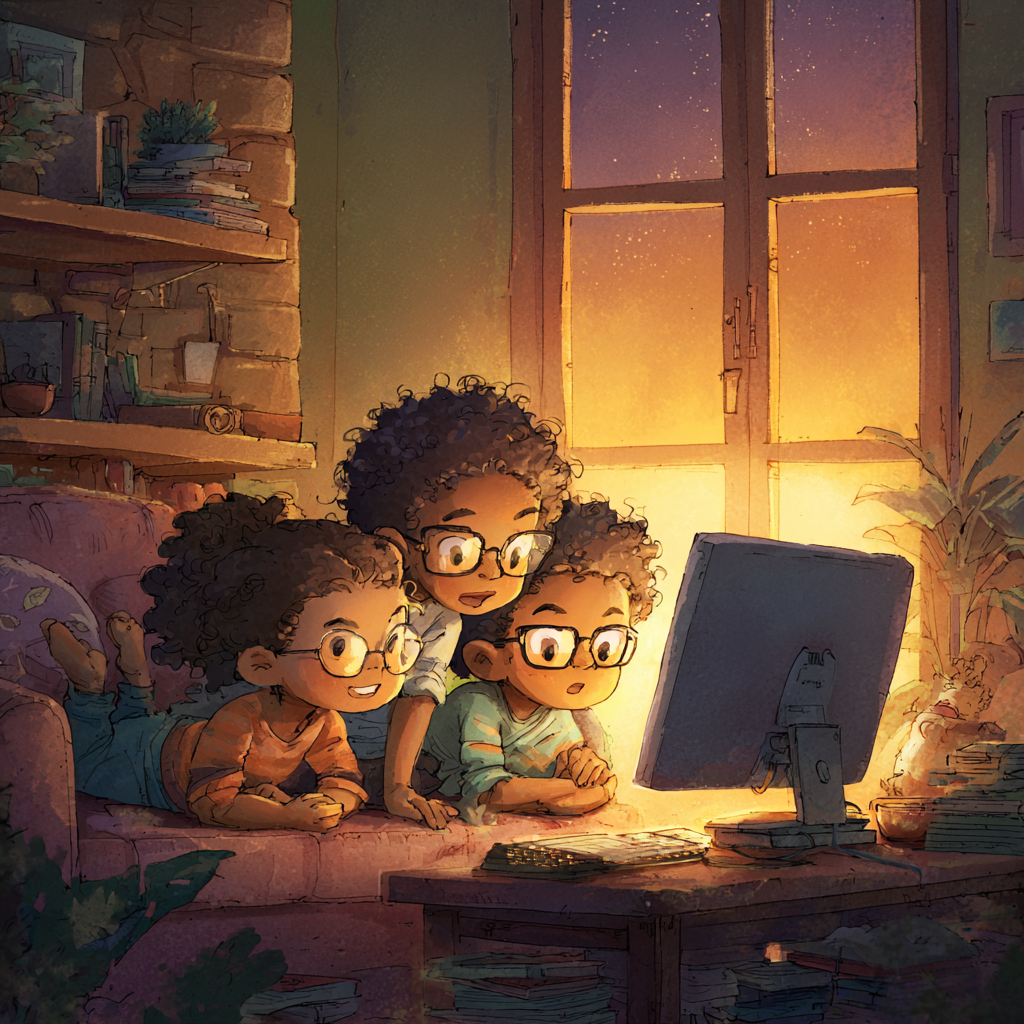How to Monitor Your Kids’ Internet Activity (Without Breaking Their Trust)
Wed Aug 20 2025
|Internet ServicesLearn how to monitor your child’s internet activity safely and respectfully. Explore the best tools, apps, and tips to keep kids protected online.

The internet is an amazing tool for learning, connecting and creativity. But it also comes with risks, especially for kids and teens. From inappropriate content to online predators and cyberbullying, parents have good reason to stay informed about what their children are doing online. Monitoring strategies and online safety guidelines should be tailored to different ages and developmental stages to address the unique needs of each group.
That said, knowing how to balance parental controls while still respecting their privacy can be tricky.
In 2025, digital parental controls are more advanced than ever, but technology alone isn’t the solution. The real key is combining smart monitoring with open, honest communication. Here’s how to do both.
Why Monitoring Kids’ Online Activity Matters
Today’s kids aren’t just growing up with the internet, they’re growing in it. From schoolwork and gaming to chatting with friends, their digital presence is constant. That means the stakes are high. A single misstep like sharing personal information on the internet can have lasting consequences.
Many parents worry about predators or explicit content, and rightfully so. But the potential risks go beyond that—screen addiction, cyberbullying, and emotional stress are just as real. Monitoring isn’t about spying. It’s about staying close enough to spot the warning signs and offer support.
Balancing Protection and Privacy
This is the tricky part. Kids, especially teens, crave independence. But parents want to protect them. The solution isn’t extreme oversight, it’s transparency.
Let your child know you’ll be involved in their digital habits, and explain why. Framing your involvement as guidance instead of control makes a big difference. You’re not trying to catch them doing something wrong, you’re helping them make smart choices in a complex digital world.
The level of oversight should match your child’s age and maturity. A younger child may need stronger filters and more structured boundaries. But with older children, it’s important to respect their privacy while still ensuring their safety. Parents can support their child’s privacy by having open conversations about boundaries and monitoring, and gradually allowing more freedom as trust and responsibility grow. The ultimate goal is to raise someone who can manage their own online life responsibly.
Best Parental Control Tools and Apps for 2025
Tech can be a huge ally when it comes to digital parenting. Many parental control tools now offer compatibility with android devices, the ability to block apps, and filter websites to customize and supervise children’s internet usage. A monitoring app can help parents oversee their child’s account and online activities across various sites. Today’s parental controls go beyond basic website blocking. They provide real-time insights, activity alerts, and even AI-powered scanning of messages and social media content. Here are some of the top parental control apps in 2025:
Qustodio
Qustodio is one of the most comprehensive options available. It offers real-time location tracking, detailed app usage reports, screen time controls, and even YouTube monitoring. The user-friendly dashboard makes it easy for parents to stay on top of their child’s digital habits across devices.
Bark
Bark focuses on monitoring texts, emails, and more than 30 social media platforms using advanced AI. It flags potentially harmful content such as signs of bullying or depression. If it notices something, it sends an alert directly to the parents. This makes it a great tool for staying informed without constantly checking in.
Google Family Link
Ideal for Android households, Google Family Link is designed specifically for use on android devices, including smartphones and tablets. It helps parents manage screen time, control app downloads, and set digital ground rules. You can lock a device remotely, monitor app activity, and view location info all from your own phone. Plus, it’s free and integrates well with other Google tools.
Canopy
Canopy stands out for its real-time filtering technology, which blocks explicit content as it appears. You don’t have to wait for updates or database refreshes. It’s a great option for younger children or families who want strong safeguards while still allowing safe browsing.
Norton Family
For families already using Norton antivirus software, Norton Family is a natural addition. It allows for deep content monitoring, customizable web filtering, time supervision, and location tracking. Its integration with Norton’s broader security suite makes it a seamless all-in-one solution for digital safety.
Each of these tools offers its own strengths, and many allow for flexible settings as your child matures. Choose one based on your family’s needs, your child’s age, and the platforms they use most.
Setting Up Parental Control Apps
Setting up parental control apps is one of the most effective ways to keep kids safe online while encouraging responsible online behavior. Start by researching and selecting a reputable parental control app that fits your family’s needs—look for features like content filtering, time limits, and real-time monitoring of online activity. Once you’ve chosen an app, install it on your child’s device and walk through the setup process together. Configure the parental control settings to restrict access to inappropriate content, set daily or weekly screen time limits, and monitor the types of websites and apps your child can access.
It’s important to be transparent with your kids about why you’re using these tools. Explain how parental control apps help protect them from online risks and support healthy screen time habits. Involve your child in setting some of the rules, such as agreeing on reasonable time limits or discussing which types of content should be off-limits. This collaborative approach not only helps keep your kids safe online but also builds trust and teaches them about responsible online behavior.
Implementing Parental Control on Mobile Devices
With most social media platforms and websites just a tap away, mobile devices can expose kids to a wide range of online risks. Implementing parental control on mobile devices is essential for keeping your kids safe online. Start by installing parental control software that allows you to restrict access to adult websites, set screen time limits, and monitor your child’s online activity. Many mobile devices also come with built-in parental control features—use these to enable content filters, block specific apps, and set time limits for device use.
Regularly review your child’s app downloads and online activity, and adjust the parental control settings as needed to keep up with new apps or changing habits. Encourage responsible online behavior by having ongoing conversations about the importance of online safety and the potential dangers of harmful content. By taking these steps, you can help protect your kids from inappropriate material and ensure they develop healthy digital habits on their devices.
Monitoring Online Activity on Gaming Consoles
Gaming consoles are a popular way for kids to connect with friends and enjoy online gaming, but they also come with their own set of online safety challenges. Most modern gaming consoles include built-in parental control features that let you restrict access to certain online content, set time limits for gameplay, and monitor your child’s online activity. Take advantage of these tools by setting up parental control apps or using the console’s own settings to block inappropriate games, limit online interactions, and keep track of who your child is communicating with.
It’s also important to establish clear ground rules for online gaming—such as how much time can be spent playing, which games are allowed, and what kind of interactions are appropriate with other players. Regularly check in with your child about their gaming experiences and remind them to come to you if they encounter anything that makes them uncomfortable. By actively monitoring online activity on gaming consoles, you can help protect your kids from online predators and harmful content while still allowing them to enjoy their favorite games safely.
Blocking Inappropriate Content
Blocking inappropriate content is a key part of keeping kids safe online and promoting responsible online behavior. Use content filters and website blockers to restrict access to adult content, explicit material, and other potentially harmful websites. Parental control software makes it easy to block specific apps and websites that you don’t want your child to access, and many tools allow you to customize the level of filtering based on your child’s age and maturity.
Make it a habit to regularly review and update your blocked content list, as new websites and apps are constantly emerging. Talk to your kids about why certain content is off-limits and encourage them to let you know if they come across anything that seems inappropriate. By taking these proactive steps, you can create a safe online environment for your kids and help them develop the skills they need to navigate the online world responsibly.
How to Monitor Without Breaking Trust
One of the most common concerns from kids is feeling like they’re being watched all the time. And honestly, they’re not wrong to feel that way if you’re monitoring them without their knowledge.
This is why honesty matters. If you’re using an app or checking browser history, let them know. In fact, reviewing their online activity together can be a great way to spark conversations. You can talk about what they’re watching, who they’re chatting with, and even review direct messages to discuss what kind of content feels safe or unsafe.
It’s also helpful to build in opportunities for choice. Ask your child to help decide what types of content should be off-limits or how much daily screen time makes sense. Giving them a voice helps them feel respected, which in turn makes them more likely to follow the rules.
Recognizing Red Flags Online
Even with apps and controls in place, it’s important to stay tuned into your child’s behavior. Sometimes, the most important signals aren’t digital at all, they’re emotional.
If your child suddenly becomes secretive about their screen use, withdraws from family or friends, or seems unusually anxious after going online, those could be signs of something deeper going on. You might also notice them using new usernames, becoming obsessed with specific apps, or staying up late on their devices.
These shifts don’t automatically mean there’s a crisis, but they are worth a conversation. Not all changes are negative—some may reflect personal growth or new interests, so it’s important to stay engaged and supportive.
Open Communication is Everything
Let’s face it, tech changes fast. You might not know the latest app your kid is using, but if you’ve built a habit of open conversation, they’re more likely to keep you in the loop.
You don’t need to have all the answers. What matters more is showing that you’re interested in their digital lives without judgment. Make space for them to talk about things they’ve seen online, questions they have, or situations that made them uncomfortable.
Instead of waiting for a problem to arise, try scheduling regular, casual chats about screen time. Use these opportunities to share safety tips and discuss strategies for staying safe online, such as how to handle cyberbullying or protect personal information. Talk about what apps they’re into, what trends they’re following, and how they feel when they’re online. You might be surprised by how much they’re willing to share when the conversation doesn’t feel like an interrogation.
Setting Healthy Digital Boundaries
Rules around device use can be helpful, but only if they’re realistic and consistent. Things like no phones at the dinner table, devices out of bedrooms at night, or daily screen time limits aren’t just about control. They’re about creating space for balance.
Scheduling regular screen-free periods helps prioritize family time, allowing everyone to connect without digital distractions. Setting boundaries and using parental controls also helps create a family safe online environment, protecting children from online threats and encouraging safe internet practices for everyone.
You can also use your family’s values as a guide. If kindness and honesty are important offline, they should apply online too. If your household values rest and downtime, it makes sense to set screen-free hours on weekends or after school.
Boundaries work best when kids understand the “why.” So whenever possible, tie the rules back to well-being, focus, and real-life connection. Not just rules for the sake of rules.
Overcoming Common Challenges
Using parental controls isn’t always smooth sailing—many parents face challenges like pushback from kids, especially teenagers, or feeling overwhelmed by the complexity of parental control software. If your child resists the idea of parental controls, have an open and honest conversation about online safety and why these tools are important for protecting them. Emphasize that parental controls are not about spying, but about keeping them safe online and helping them build responsible online habits.
If you find parental control software confusing, start with the basics: enable content filters and set simple time limits. As you become more comfortable, you can explore more advanced features to further customize your family’s online safety settings. Don’t hesitate to seek out tutorials or support from the app provider if you need help. By addressing these common challenges head-on, you can ensure that your kids are protected online and that your family’s digital life remains safe and balanced.
A Parenting Skill for the Digital Age
Learning how to monitor your kids’ internet activity is a modern parenting essential. Monitoring is crucial to protect kids from the potential risks, including exposure to sexual content. The goal isn’t to micromanage, but to support kids online and guide their online activities, helping them stay safe and make responsible choices.
Use the tools and set the boundaries. But above all, build the relationship. Because the best protection your child has isn’t an app, it’s knowing they can come to you no matter what they find online.
Check us out at internetservices.com today and find out which internet is best for you.



